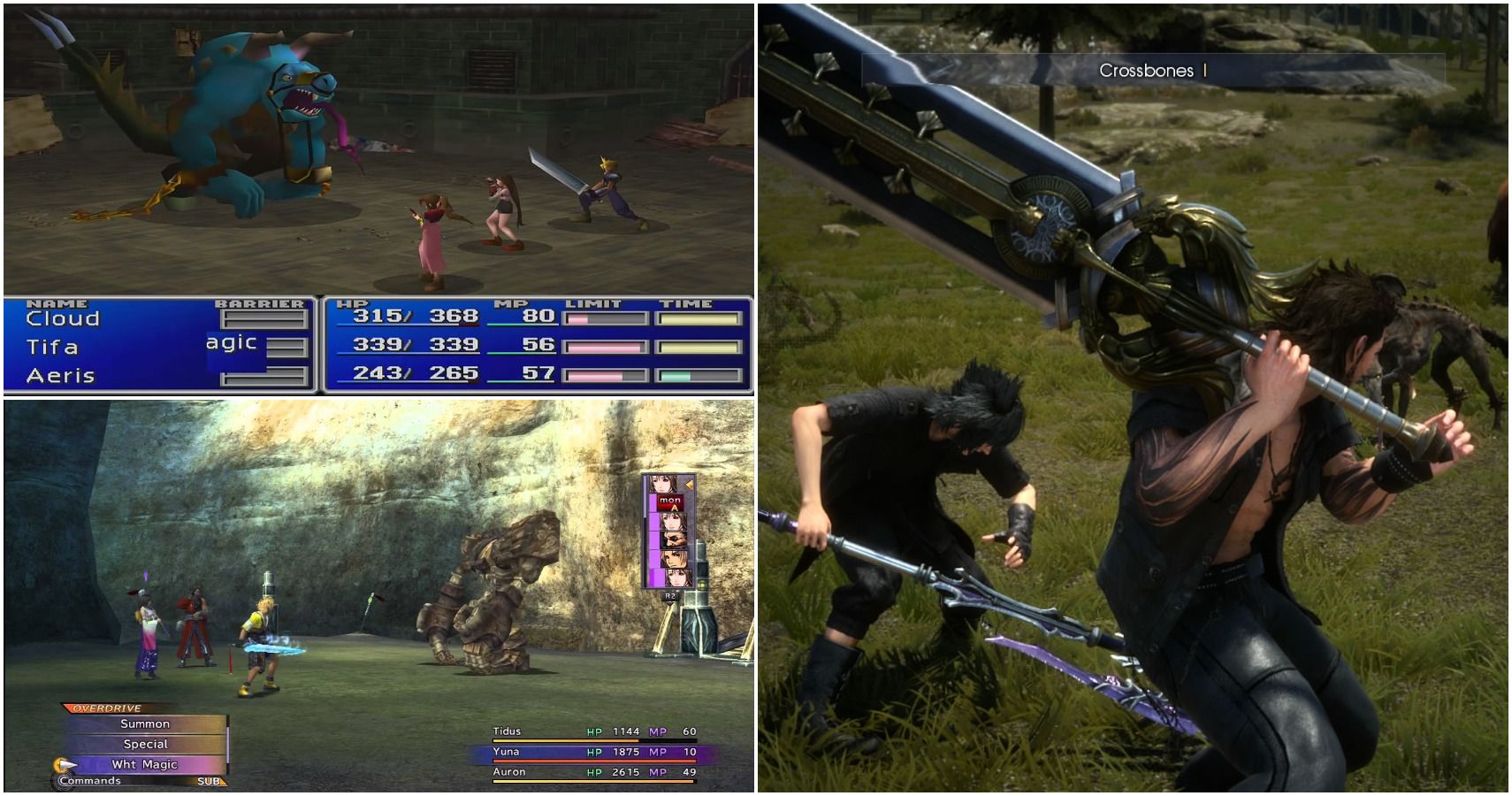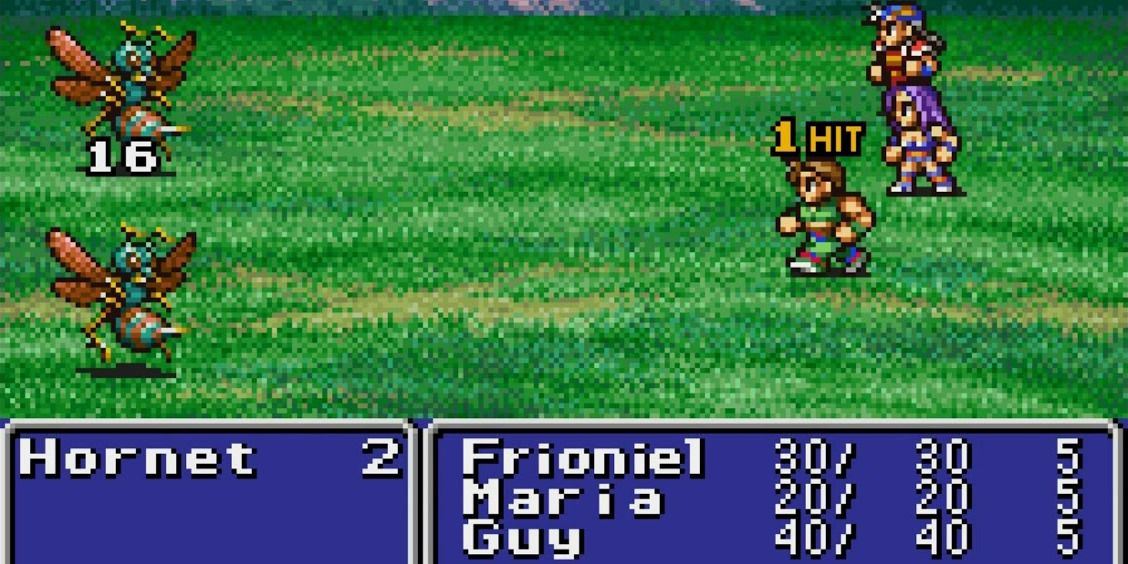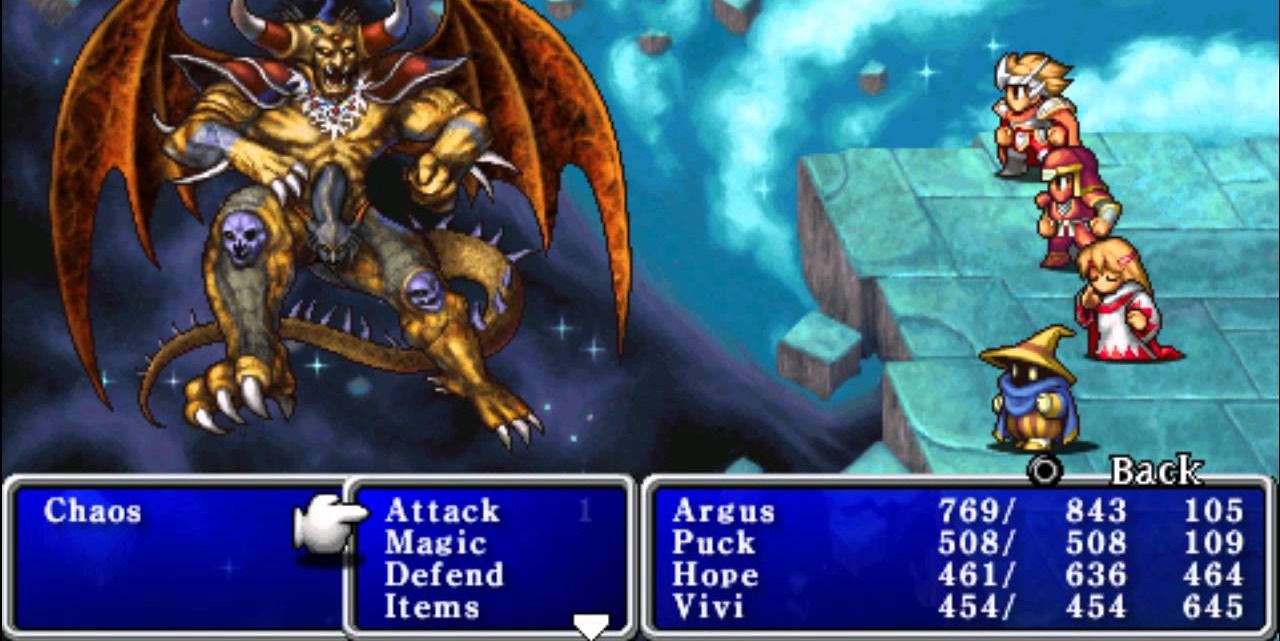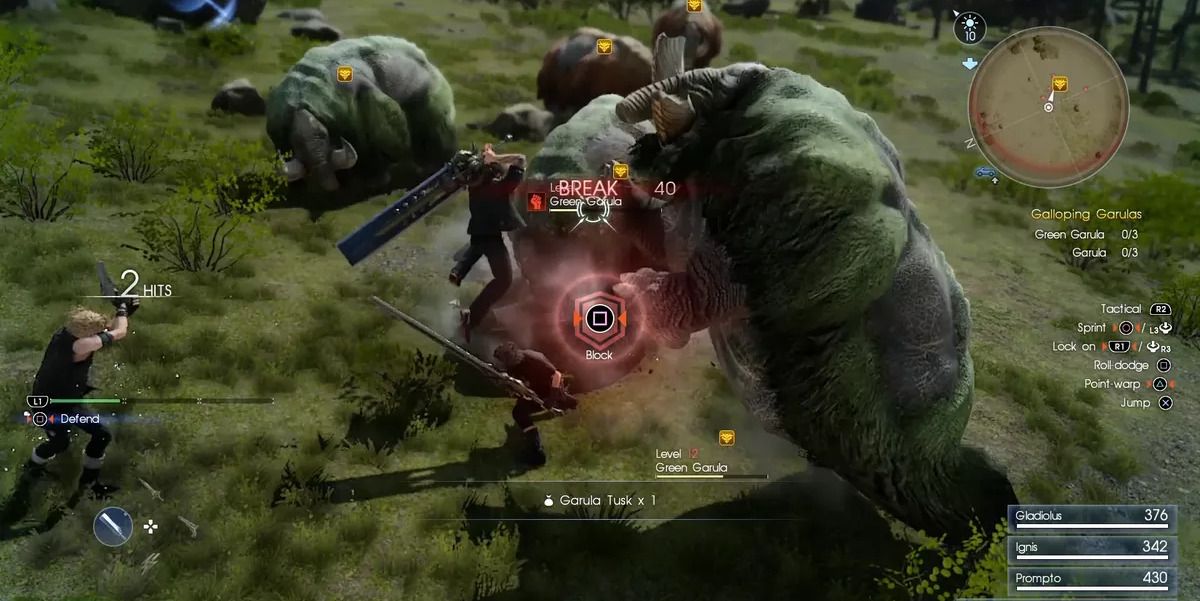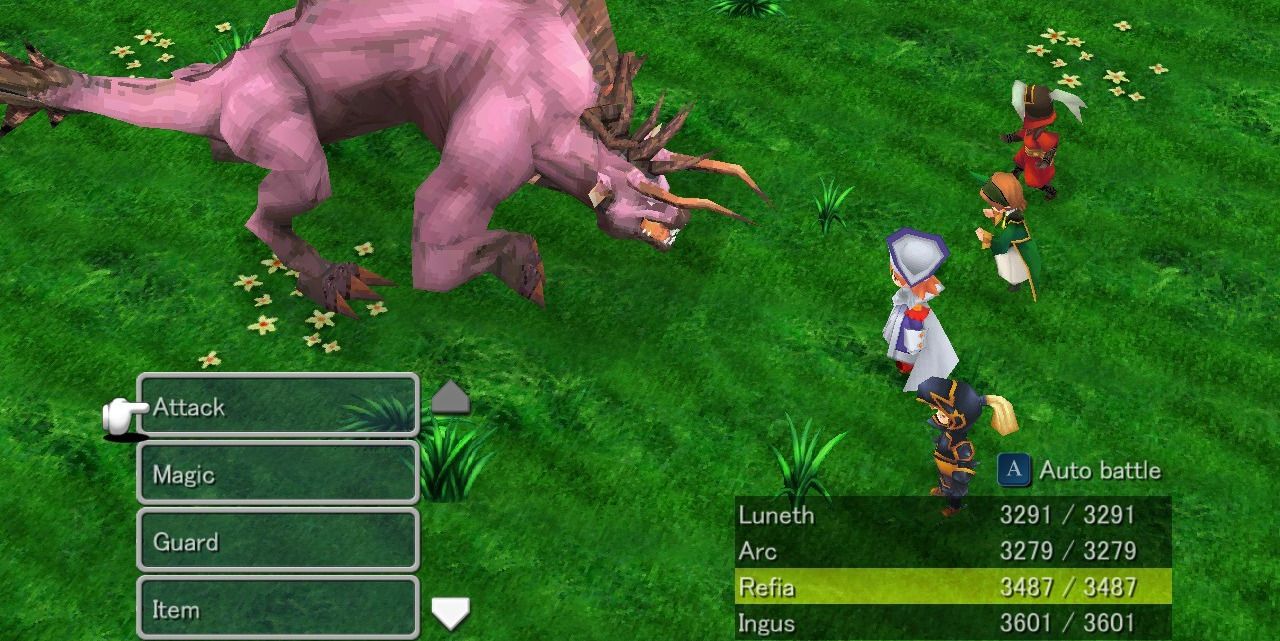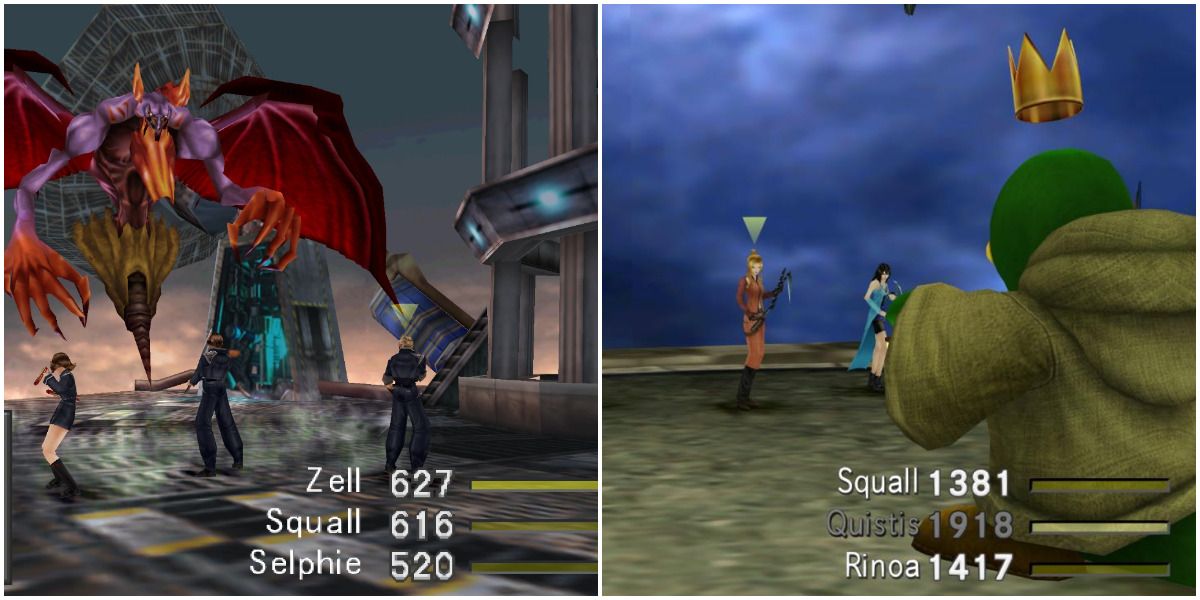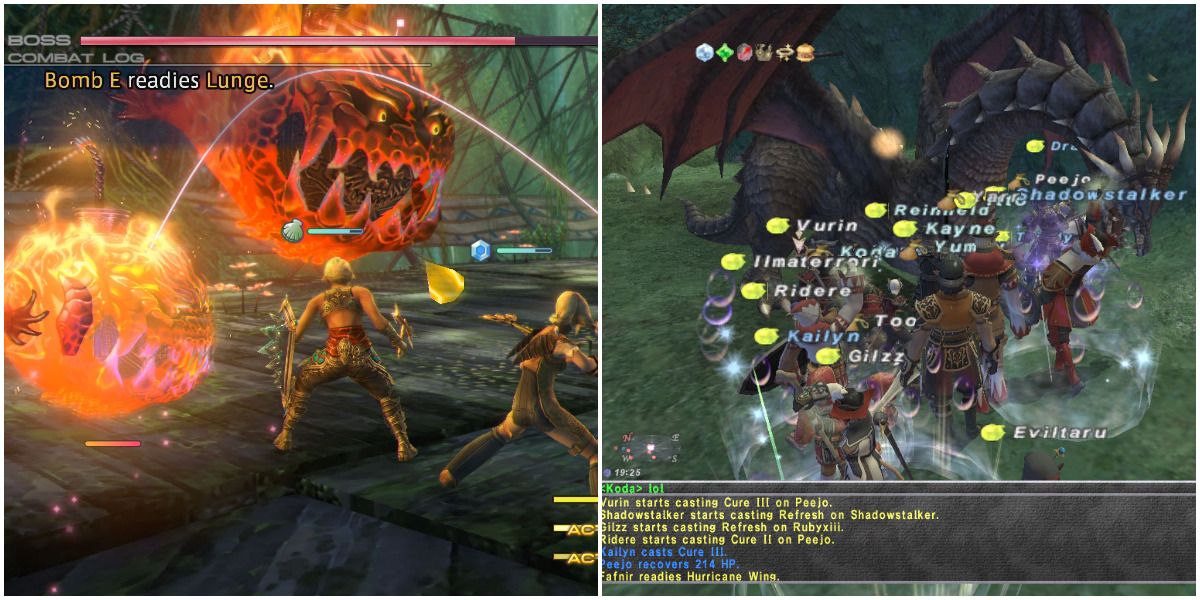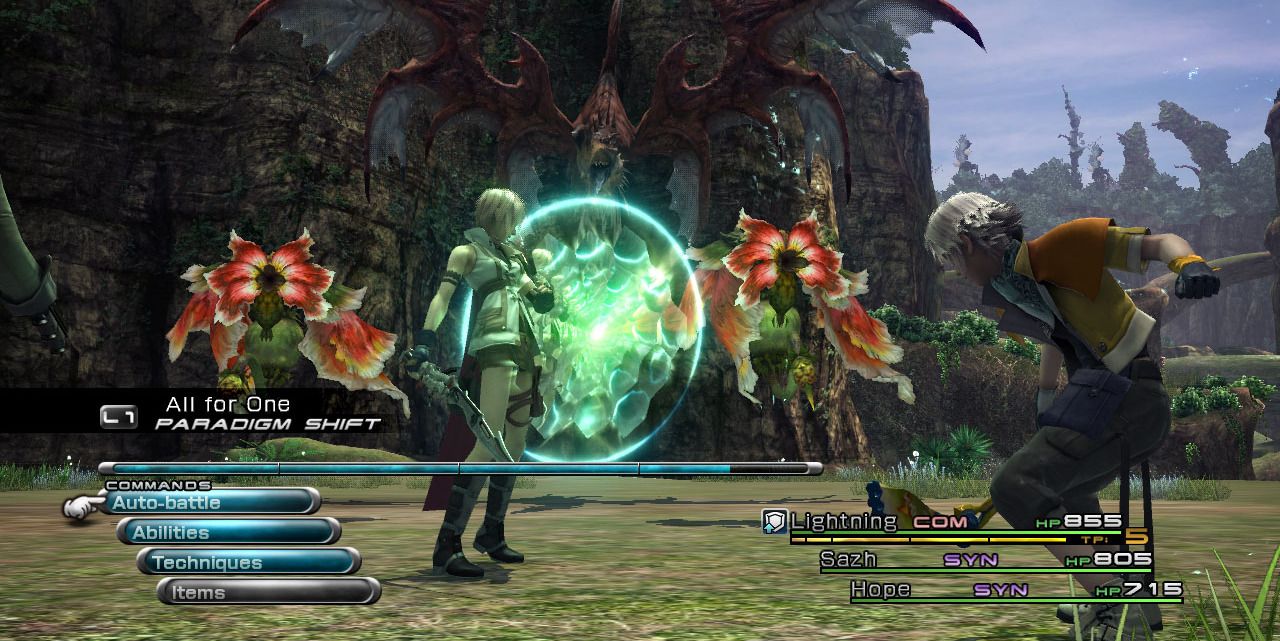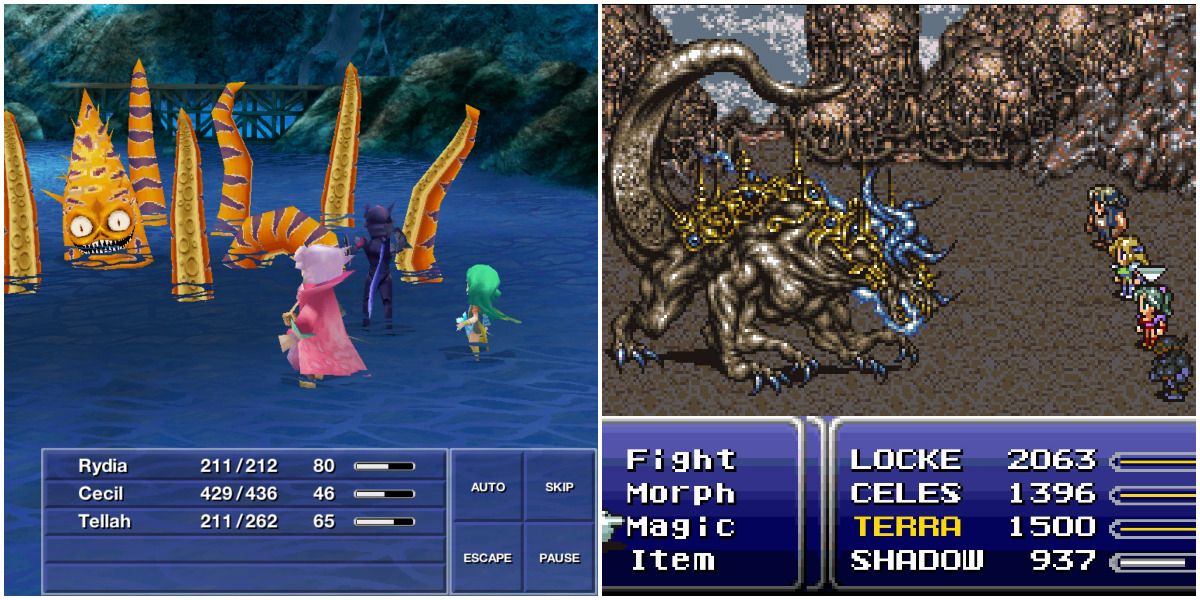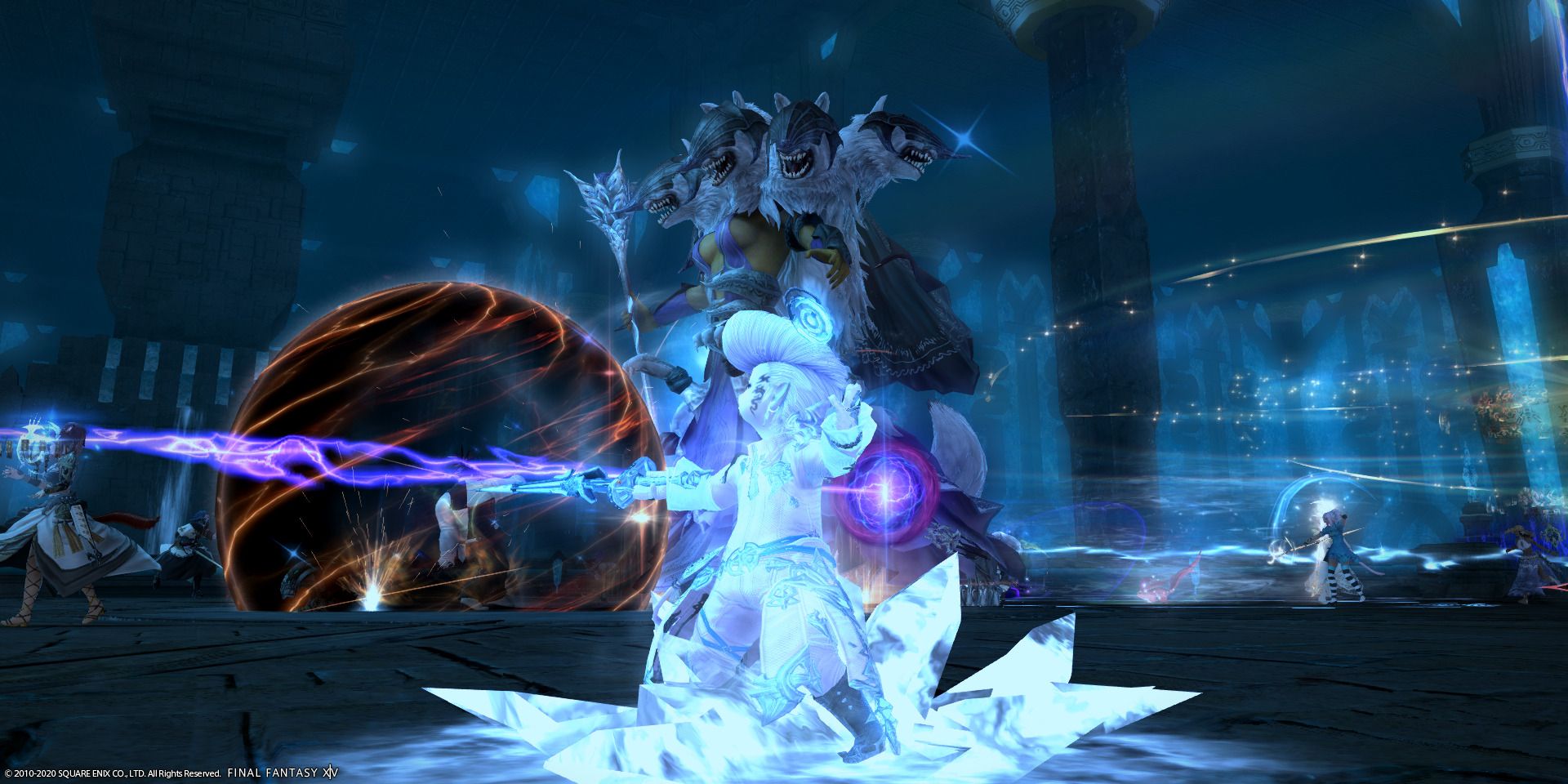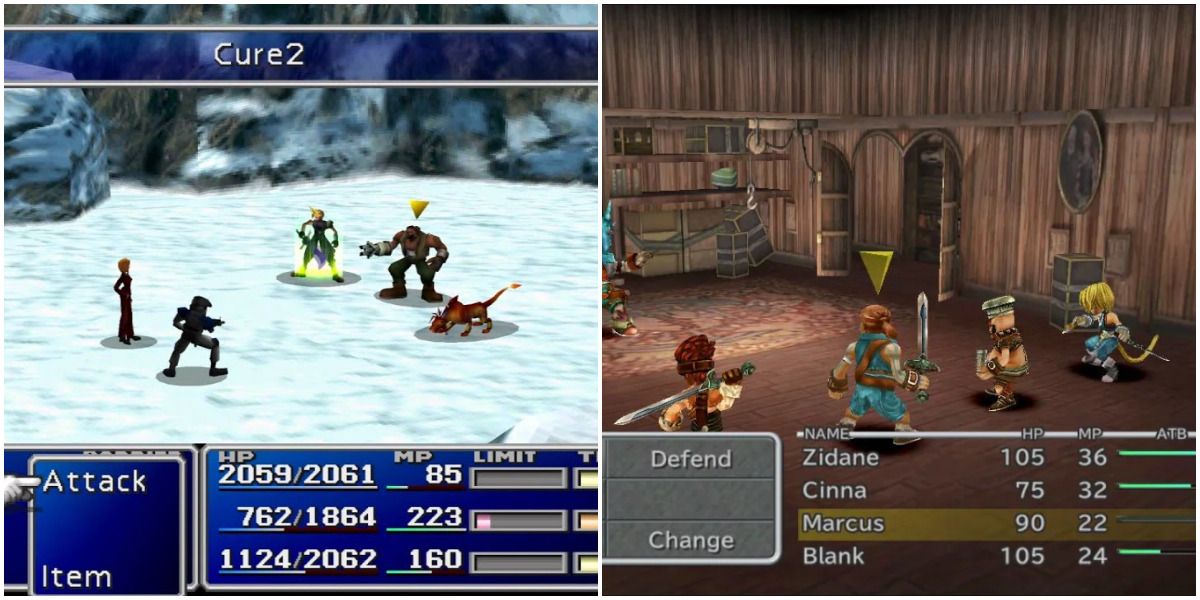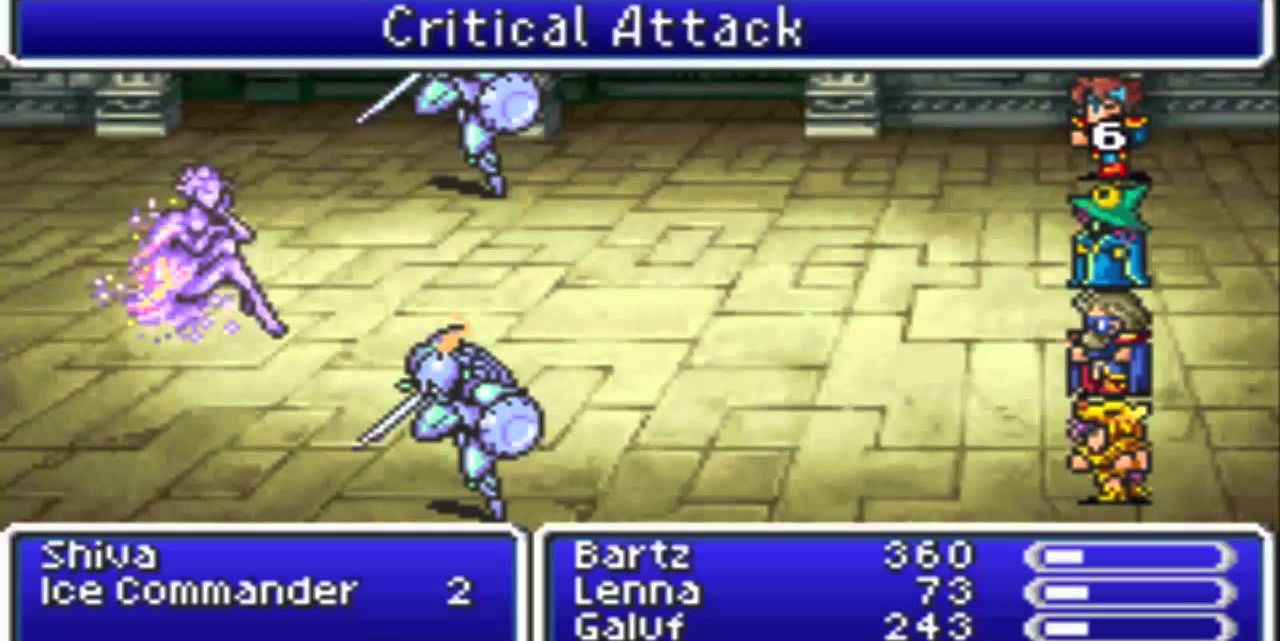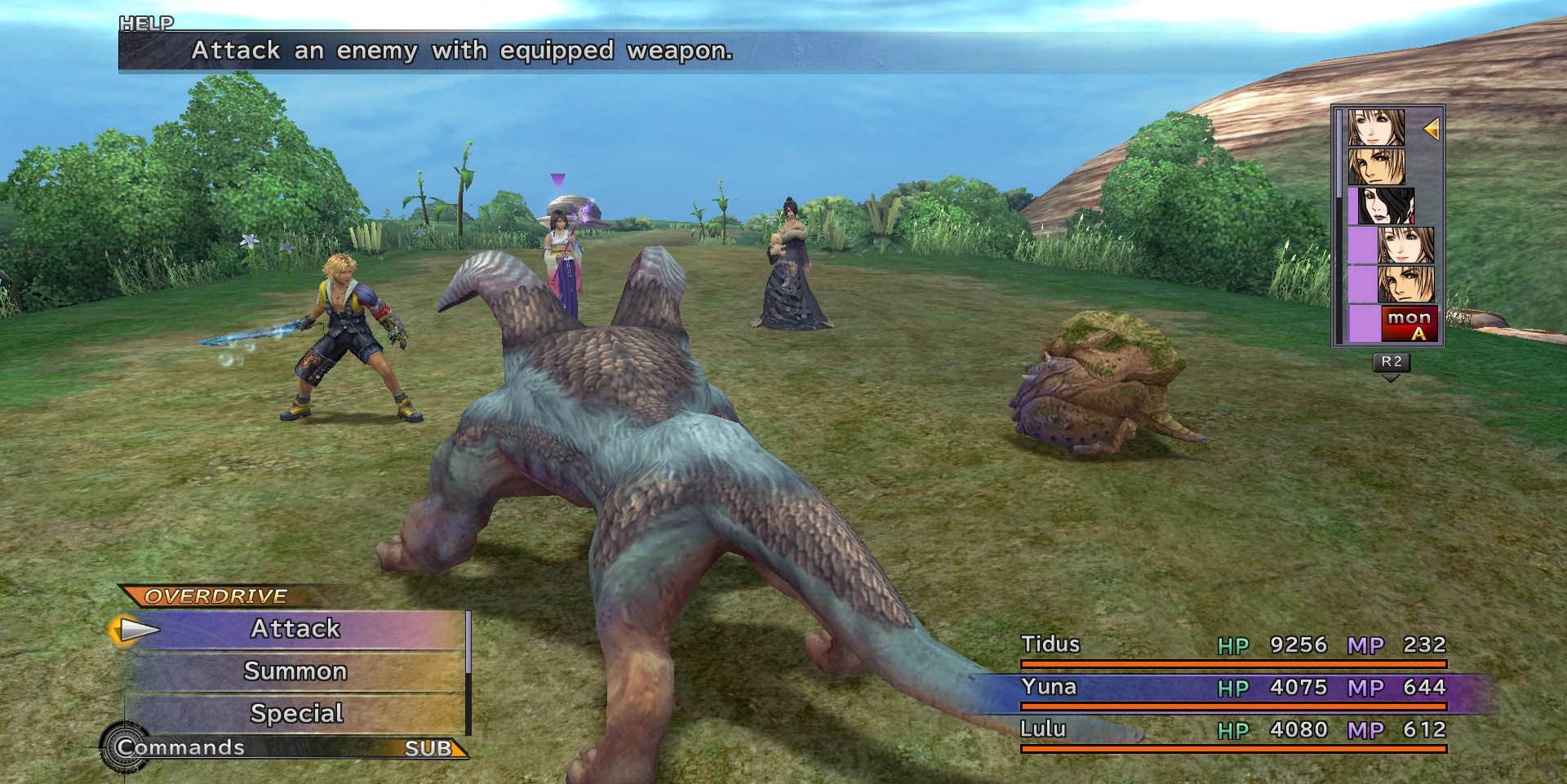Any game series that runs across console generations likely looks to innovate in various ways. They may become technically better, or the genre gets a twist, or the game switches genres entirely. Change is inevitable. And unless your name is Pokemon, it's pretty much necessary to stay relevant in the ever-changing gaming landscape.
So, what about a series like Final Fantasy? The series is pretty famous for making sweeping changes, particularly in the combat of the series. Some titles have less innovations than others, but each game feels wholly unique. But these titles are not equal, and their gameplay experiences aren't either. Separated from the narratives and presentation, the gameplay still matters in the Final Fantasy series. Some games are wonderful, and some games just can't cut it.
12 Final Fantasy II
The second game in the series was released on the Famicom, following the success of the original. The developers made drastic changes to the relatively simple story and customization of the original title. By comparison, there's a lot of freedom in how to develop the party of Firion, Guy, Maria, and the fourth party member who always dies.
However, this freedom is also a curse for the game. The progression system for leveling up characters is no longer straight-forward, as skills are increased by performing actions. Attacking increases strength, getting hit increases defense and HP, using magic increases their potency, and so on. It's a lot to take in at first, and can create frustration in players who might have to grind more to get through the game. It's just not that fun.
11 Final Fantasy I
The first game in the series is simple and fun in combat. It doesn't operate on the ATB system adopted after Final Fantasy IV. Instead, each attack is selected before the round, and then the whole combat phase plays out afterward. The original is somewhat janky in terms of targeting and having sometimes useless stats and abilities, but remakes fix that.
This simplicity is also the first game's downfall. Being locked into a set of four fairly paper-thin jobs doesn't make for a very interesting experience. They each have their own gimmicks, but only the spellcasters feel truly unique. It's cool to be able to run it down with four White Mages, but it's still weaker than any of its successors in terms of gameplay.
10 Final Fantasy XV
Being the latest mainline game, Final Fantasy XV totally reinvented the turn-based ATB style that had been in use for decades. Instead, the game adopts a Kingdom Hearts-esque combat system, with Noctis wielding various weapons and dipping around the battlefield to overcome enemies in real-time. Magic is relegated to grenades that are underwhelming at best, so it's all about hacking and slashing.
This stays fun for a while. However, there isn't a whole lot of depth to combat encounters. They all play out similarly, with the same strategy being valid for most fights. Magic being kneecapped plays a lot into this, as Kingdom Hearts found a good way to weave magic seamlessly into the action. It's a good trial run, but hopefully it gets improved for the next entry.
9 Final Fantasy III
Final Fantasy III combined the static party of the second entry with the job system of the first entry, expanding both. It's the most complete of the Famicom trilogy by a large margin. Instead of four jobs selected at the start, the game introduces a large variety of jobs that can be changed on the fly. This gives a lot of freedom to build variety that's easy to understand and execute.
The balance is probably the least good part about Final Fantasy III. Some jobs are disgustingly overpowered, while some are just plain useless. And while it is satisfying to find cheesy strategies to overcome some of the more challenging boss battles, that doesn't make the battles well designed. It's a great and fun game to play through, but still rough around the edges.
8 Final Fantasy VIII
Final Fantasy VIII is the second game released on the PS1, having to follow-up the critical successful Final Fantasy VII. Many people have issues with the title in its story and characters. However, players also take issue with its changes to the gameplay of its predecessor, and understandably so.
While FFVII's Materia system made the combat exciting as characters were totally flexible, FFVIII doesn't reach the mark. Its junctioning system isn't very well explained and can lead to some frustration. Despite that, it's fun to have timed hits with Squall's Gunblade, and the summons make it all worth it.
7 TIE: Final Fantasy XI/Final Fantasy XII
These two games are on the same tier despite their differences. They're both fun in different, but similar ways. The combat of FFXI is a menu-based MMO of sorts, with its job system being incredibly complex. It allows for tons of variety in build strategies with its 22 jobs.
FFXII also provides a ton of variety with the License Board, particularly in the Zodiac Age edition of the game. Learning skills and developing certain jobs is satisfying, and there's a lot of different ways to build characters. The gameplay is also MMO-like in nature, which is why it's paired with FFXI.
6 Final Fantasy XIII
Final Fantasy XIII is a divisive game, for sure. A lot of hardcore fans likely would place this game towards the bottom of the list based purely on gameplay. However, despite its issues in the early parts of the game, there's a lot to love with FFXIII.
The game's combat revolves around the party members taking on one of six jobs, and the composition of those jobs together determines the AI routine for how they will execute abilities. In this regard, it's less about selecting the strongest attack and going to town, but switching up tactics to fit the situation. The battle system really shines during the battles on Gran Pulse, and it deserves more credit than it gets.
5 TIE: Final Fantasy IV/Final Fantasy VI
These two titles, known in the states as Final Fantasy II and III, share a lot of similarities in gameplay. The party all fill a set role in battle, inspired by jobs established in previous games. However, the characters will deviate plenty in terms of how they develop, breaking some established tropes.
The merits of the stories in these two games have been evaluated for years. However, in terms of gameplay, it's hard to differentiate the two. There are subtle differences in how they use the new ATB system, but it's not much. They're both incredibly solid games with a lot of options for valid party compositions, but not too different from each other.
4 Final Fantasy XIV
Final Fantasy XIV is arguably the finest the series has to offer. A lot of that can be placed on the incredible work the developers did in making MMO combat that felt fun. It takes a lot of inspiration from games that worked in the past but makes its own twists.
The best part about combat is how the battles feel action-oriented. Abilities are gated in a way that they are being woven in between dodging fireballs or the tank buster cleaving you. It even manages to make healing fun. It's smooth, and the jobs are all quite balanced, which is a shock for the genre.
3 TIE: Final Fantasy VII/IX
Another duo here since it's hard to really put one above the other. They both share a lot of similarities, but enough differences that they shine in different ways. FFVII's Materia system is great, and it improves on the speed of the ATB system from previous titles.
By comparison, FFIX is a tad slower, and the individual customization isn't as fine. The characters fill a traditional job role, like FFIV or VI. However, equipment holds skills that can help differentiate the roles of party members further. It's just as fun, and both titles are a blast to play.
2 Final Fantasy V
It's probably a hot take to rank Final Fantasy V this highly, but in terms of pure gameplay, it's one of the most finely-tuned. This game shows off the job system at its finest and is only maybe topped by Bravely Default in that regard.
There are even more jobs than in the past, and each feels incredibly unique. Some are more niche than others, and some aren't even that great. However, there are plenty of more viable jobs than in the past. Being able to pair jobs together also provided an avenue to really break the game. It's fun to experiment with, even if it can get a bit grindier than other titles.
1 Final Fantasy X
Final Fantasy X is the peak of the series in terms of turn-based combat. The ATB gauge is fun and all and keeps battles moving, but the time crunch can make strategies a bit harder to manage. Final Fantasy X reinvents the combat entirely with the CTB system.
A turn order can always be seen on the side of the screen, and the player can freely switch party members in and out to adapt to the evolving combat situation. Altering the turn-order is a valid strategy as well, and fun to do. There's also plenty of options for customization in the Sphere Grid system. It's easily the best combat system the series has ever produced.

